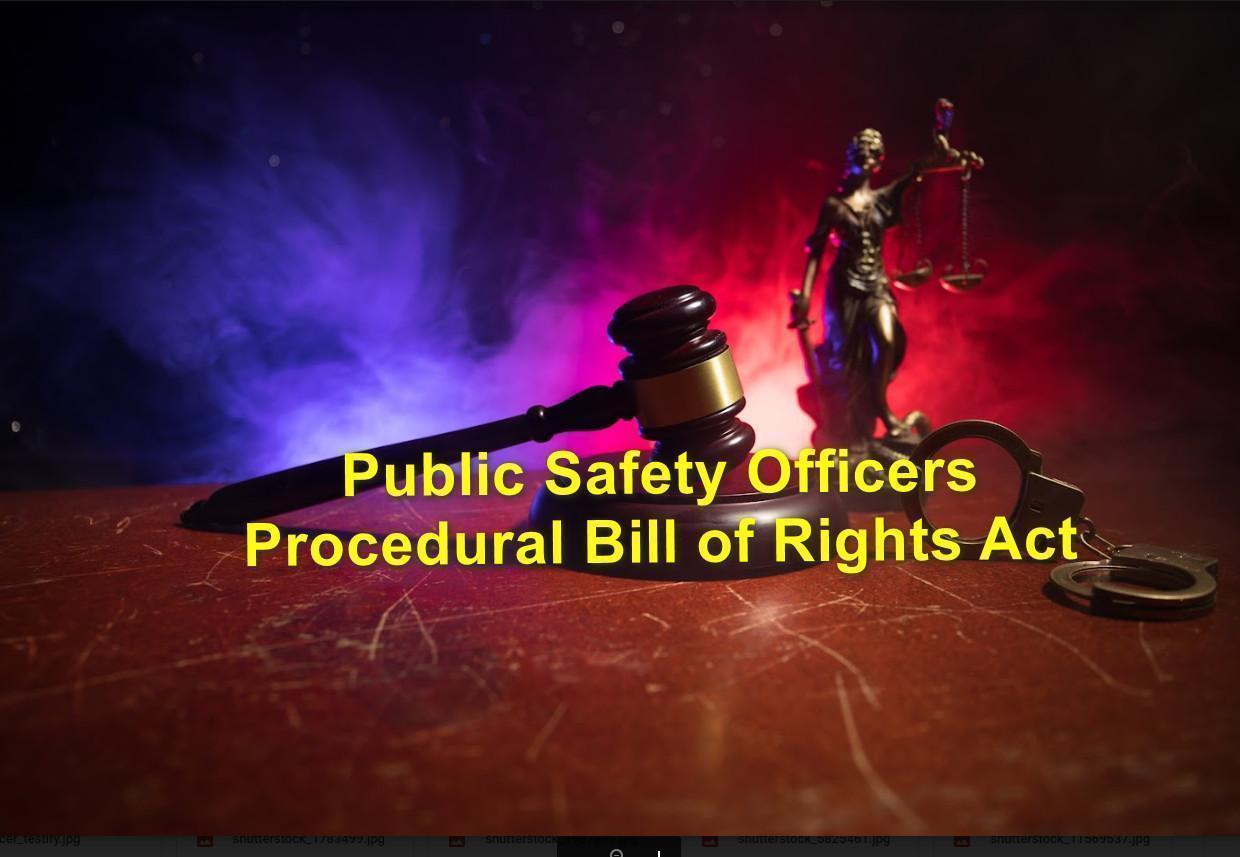

- Ref # CAE00022
- March 12, 2023
The Public Safety Officers Procedural Bill of Rights and the Statute of Limitations
The Public Safety Officers Procedural Bill of Rights and the Statute of Limitations
An Editorial By Robert C. Phillips, Deputy District Attorney (Ret).
Gov’t. Code § 3304(d)(1) of the Safety Officers Procedural Bill of Rights Act provides for a one-year statute of limitation, measured from the date of the alleged violation without taking into consideration any other over-lapping violations.
As a law enforcement officer, you may sometimes wonder whether anyone in the public or government sectors is watching your six, given the recent “defund the police” mentality and the California Legislature’s tendency to be overly concerned with lessening punishments on criminals while at the same time imposing more and more restrictions on law enforcement’s powers and duties. But you might take comfort in the knowledge that Cops’ Lives do Matter, as illustrated by the existence of the “Safety Officers Procedural Bill of Rights Act;” i.e., Gov’t. Code §§ 3300 et seq.
One of the protections for law enforcement found in the list of rights provided for in the Act is Gov’t. Code § 3304(d)(1). Under this section, a “statute of limitations” is mandated, limiting the time to one year between when an act of misconduct by a law enforcement officer is discovered and the resulting investigation is to be completed with an “Intent or Notice of Averse Action” issued to the officer. This limitation is discussed in the recent case of Garcia v. State Dept. of Developmental Services (Feb. 21, 2023) 2023 Cal.App. LEXIS 109. Although since depublished by the Court (and thus not available for citation), the rule of the Garcia decision, dealing with the length of time an officer’s employers can drag out an internal investigation, is still important.
As previously noted by the California Supreme Court, a statute of limitations is important to you, as a law enforcement officer, in order “to ensure that an officer will not be faced with the uncertainty of a lingering investigation, but will know within one year of the agency’s discovery of the officer’s act or omission that it may be necessary for the officer to respond in the event he or she wishes to defend against possible discipline.” (Mays v. City of Los Angeles (2008) 43 Cal.4th 313, 322.) Gov’t. Code § 3304(d)(1) serves that purpose.
In the Garcia case, Sgt. Luis Garcia attempted to stretch the protections of an already limited Statute of Limitation even further than the statute seems to indicate. As a supervisor for the State Department of Developmental Services (i.e., the “Department”), he was initially accused of manipulating the working assignments for himself and others to provide for unnecessary overtime hours, for the purpose of maximizing their overtime pay. Even after being warned to knock it off, Sgt. Garcia figured out a way around the restrictions placed on him in order to effect the same result. When this was discovered, an internal investigation was initiated. During this investigation, several other acts of misconduct were discovered, one by one, generally involving his inappropriate treatment of some of his subordinates as well as the misuse of his office computer. The Department eventually issued a Notice of Adverse Action and disciplined him by demoting him to the rank of a regular officer. In determining that most of Luis Garcia’s admittedly inappropriate actions were not barred by the statute’s one-year statute of limitations, the Court in Garcia refers us to the relevant portions of section 3304(d)(1):
“(N)o punitive action [against a public safety officer] … shall be undertaken for any act, omission, or other allegation of misconduct if the investigation of the allegation is not completed within one year of the public agency’s discovery by a person authorized to initiate an investigation of the allegation of an act, omission, or other misconduct. . . . In the event that the public agency determines that discipline may be taken, it shall complete its investigation and notify the public safety officer of its proposed discipline by a Letter of Intent or Notice of Adverse Action articulating the discipline that year . . . . The public agency shall not be required to impose the discipline within that one-year period.” (Italics added.)
Appealing his demotion, Garcia argued that the one-year statute of limitations as imposed by Gov’t. Code § 3304(d)(1) should be measured from the date that the first offense was initially discovered, and then applied as well to all other acts of misconduct once the agency has initiated an investigation into any one of these acts. The Department, on the other hand, argued that the limitations period for each offense should begin separately, each upon the discovery of that particular act of misconduct.
The Third District Court of Appeal determined in Garcia that the Department’s interpretation of Gov’t. Code § 3304(d)(1) was the correct one. In other words, if you have a half dozen separate offenses alleged, the statute of limitations is separate for each offense; each beginning upon the discovery of the offense in issue. This is necessary in order to avoid an absurd result. For instance, if Garcia’s argument was to be accepted, then once an investigation into one offense has been initiated, any subsequent offense must be investigated and an Intent or Notice of Averse Action issued before that year expires, even if the offense is not discovered until the day before the one year expires.
The bottom line is that in this case, Officer Garcia’s authority over others in the Department has been appropriately limited due to his demotion, while at the same time other law enforcement officers are protected by insuring that their agencies initiate, investigate, and reach a conclusion in a very limited period. Sounds like a win-win result to me.







